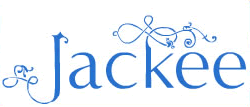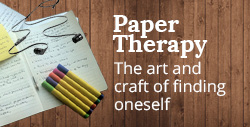Feed Those Who Want What You Have
 Since Christmas I’ve been walking around with the book How To Be An Artist by Michael Atavar curled up in the bottom of my bag. It’s a gem of a book. Avatar has a light touch that goes deep. He’s a master teacher about creativity, which he delivers in big massive chunks of wisdom all the way through the book. The book is spacious, no cramped lines and chapters here. He’s perceptive, compassionate and on the ball.
Since Christmas I’ve been walking around with the book How To Be An Artist by Michael Atavar curled up in the bottom of my bag. It’s a gem of a book. Avatar has a light touch that goes deep. He’s a master teacher about creativity, which he delivers in big massive chunks of wisdom all the way through the book. The book is spacious, no cramped lines and chapters here. He’s perceptive, compassionate and on the ball.
Today I’m reading a chapter Go where the energy is and it got me thinking and my thoughts led me to start scribbling down some of those thoughts.
Many of us struggle with knowing that there are some people we like and get on with and the feeling is mutual and then there are people who don’t like us and we wonder why they don’t like us and we can sometimes expend wasted energy trying to get them, most often unsuccessfully to like or notice us.
Take for instance in my work as a coach trainer. There will be delegates who are naturally drawn to my less formal style of facilitating and others who will prefer the more directive and structured styles of some of my colleagues. Now, do I spend my time trying to win over the approval of those who prefer the latter style or do I stick with focusing my energy towards those who are enjoying the way in which I facilitate and deliver and recognize you can’t win them all?
In his chapter Go With The Energy Atavar suggests, “Go to people you feel comfortable with and who like you. Don’t go towards people who don’t like you. You sometimes believe that you can convert them. You can’t. Steer clear.” I couldn’t agree more.
He goes onto to share a personal example, which is worth sharing here as I suspect many of you will have had a similar experience.
“Once I was told by a colleague to put a well known curator on my mailing list. I didn’t really have a good feeling about this. My intuition was right – the first time I sent out an email shot advertising a recent exhibition, she asked to be unsubscribed. I immediately took her off the list.” (Atavar, 2009)
The curator was clearly not a natural member of Atavar’s tribe. As soon as I was halfway through reading How To Be An Artist I couldn’t wait and went on line to order more of what he has written. I was what I call one of Atavar’s best clients. I was naturally attracted and engaged with what Atavar has on offer and needed little persuasion or encouragement to connect in.
I first came across the word “tribes” in relation to online audiences and communities through the work of Seth Godin. Godin in a book of the same name describes, “ a tribe is a group of people connected to one another, connected to a leader, and connected to an idea. . . . .People want connection and growth and something new.” (Godin, 2008)
Where in the past tribes needed to be local now they can be global making it even more feasible to go where the energy is. Why focus on the one curator who doesn’t get you when there are probably a thousand curators worldwide containing ten or even five who maybe the one’s who do just get you?
And neither is this all about a number’s game. The other day I took a quick look at the number of people following me on my Twitter account. It was I thought a reasonable figure of 400 people until I checked in with a couple of my peers Twitter accounts and realized they had in the region of a thousand plus followers. Suddenly my 400 followers felt like peanuts. I had to quickly reel myself back in reminding myself that it’s quality not quantity.
However the episode reminded me of just how easy it is to fall into the trap of being seduced into the numbers game. The irony is your tribe doesn’t need to be huge to be effective. Whether a thousand followers or 40 followers consider the kinds of relationships you have with your tribe. That’s what really counts. It’s better to expend your energy calling in those who feel connected to what you offer than scattering your energies far and wide with little meaning.
Take on board the words of Atavar, “Stay in your own good space and be yourself.” (Atavar, 2009)
Answer the questions below to deepen your connection with your tribe and bring your tribe closer to home:
- Who are your ‘best’ clients?
- What kinds of people are you drawn to work with?
- What kinds of people are drawn to work with you?
- Assess whom you’ve worked with over the last year. What’s the emerging theme or brand from your work with your coaching clients?
- Develop a profile of your most successful clients: age, gender, profession, circumstances, income and life style.
- Think about what your ‘best’ client needs are? How do you meet these needs?
- What services or products can you offer your best client? These are products that energize you and your clients and have a sense of ease and effortless around their creation.
- What free products can you create to attract your best clients to your tribe today?
- What else?
To attract your tribe spend more time thinking about the people who want what you offer and less energy and effort on those who don’t.
Categories Coaching | Tags:






Leave a Reply
By submitting a comment here you grant Jackee Holder a perpetual license to reproduce your words and name/web site in attribution. Inappropriate or irrelevant comments will be removed at an admin's discretion.